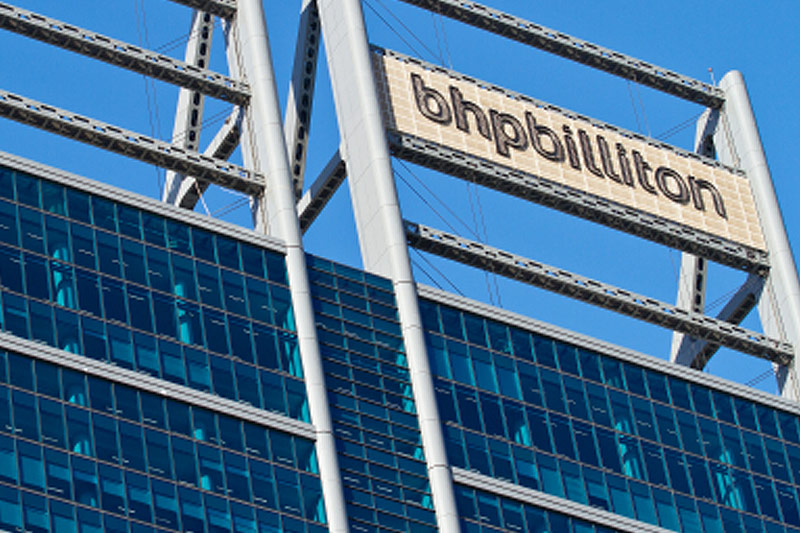(Repeats item issued earlier with no change to text)
* BHP ramping up production at huge S.Australian mine
* Rich ore grades, heap leaching, cost cuts key
* BHP scrapped $20 bln boom time expansion in 2012
By Sonali Paul
ROXBY DOWNS, Australia, May 27 (Reuters) - A vast copper and uranium lode in Australia's parched outback, global miner BHP Billiton (LON:BLT)'s BHP.AX Olympic Dam was long emblematic of the industry's boom year projects: complex, ambitious and - until 2012 - slated for a $20 billion expansion.
Like its rivals, BHP is still betting on copper, and the ore under Olympic Dam's red desert sand is key to that.
But in an age of unprecedented mining pain, it needs to reverse years of underperformance at one of its richest mines on a much tighter budget.
On the ground, that means cheaper supplies, bigger trucks and fewer staff; on a visit this week, more than half the desks and offices at the mine's administration centre were empty.
Last year, the mine cut 600 jobs, around 15 percent of its workforce, a blow to the purpose built town of Roxby Downs that services the mine.
Thanks to rich ore grades underground, cuts have already helped the mine halve its production costs to $1 per pound of copper by 2017. That puts it on par with the world's biggest copper mine, BHP's Escondida mine in Chile.
And those savings - plus the use of slower but cheaper heap leaching techniques to process the complex ore - could be Olympic Dam's saving grace.
"Olympic Dam, over time, has really struggled to maintain its niche in terms of being globally competitive," said Jacqui McGill, who runs the mine for BHP.
As costs fall, however, McGill says she is in a position to fight for funding to eventually double the tonnes mined to around 450,000 tonnes from 2025.
"I think at a dollar a pound we've earned a seat at the table."
Olympic Dam was the prize in a takeover battle more than a decade ago that pitted BHP against Xstrata, now part of Glencore GLEN.L . Then, BHP wanted to triple copper and quadruple uranium output - until uranium prices sank after Japan's Fukushima nuclear disaster.
GRADE BLESSING, URANIUM CURSE
On the surface, Olympic Dam is the image of the efficiently run austerity-era mine.
Sprawling across 18,000 hectares of arid plains, it is set to use drones to inspect facilities, and move workers underground faster by zooming them down a lift shaft rather by a 15-minute drive down a ramp.
Roxby Village, one of two BHP camps in the area, houses workers in cheap motel-style rooms. The mess hall hosts a generous buffet, where workers load up lunch boxes to cart off for their 12-hour shifts in temperatures that often top 45 degrees centigrade (113 Fahrenheit) in summer.
Olympic Dam has about 470 km of tunnels and plans to drill a further 120 km over the next five years to open a new underground seam that will give it some of the richest ores in the world.
BHP expects that will improve the grade by around 20 percent to more than 2.2 percent copper within the next five years - compared to average grades of less than 1 percent anticipated elsewhere by then.
That would position Olympic Dam to be able to hike output from 200,000 tonnes this year to 230,000 tonnes by 2021.
"The curveball is it's got uranium and all the daughter isotopes," said Justin Bauer, head of resource planning and development at Olympic Dam.
Because of the uranium, BHP has to process all the ore at the site, from grinding to smelting and refining to produce sheets of copper and containers full of uranium yellow cake, instead of just shipping out copper in concentrate.
HEAP LEACH SIMPLICITY
To simplify the operation, McGill is running a pilot study of heap leaching, which BHP has used for years at mines in Chile, expecting to lower the operating costs at Olympic Dam by around 10 percent.
It involves stacking crushed ore over a pad, pouring on acid and water and blowing air up through it to leach out the metals, a process that takes around 12 months for the complex ore.
If it works, the site would not need as much expensive equipment, would need less extra power and could use saline water - reducing the need for costly desalination.
"This is a significantly less intensive process, both from a power and a water perspective than the original expansion big bang," McGill said.
Results of the trials of a whole range of ore are not due until 2019 and BHP has yet to disclose how much the expansion is expected to cost, leaving analysts somewhat in the dark.
"In theory, the heap leach should work," Deutsche Bank (DE:DBKGn) analyst Paul Young said. "But the question becomes can you actually double the size of the underground and what do the economics look like?"
<^^^^^^^^^^^^^^^^^^^^^^^^^^^^^^^^^^^^^^^^^^^^^^^^^^^^^^^^^^^ How heap leaching works
http://tmsnrt.rs/1RsnmFk
^^^^^^^^^^^^^^^^^^^^^^^^^^^^^^^^^^^^^^^^^^^^^^^^^^^^^^^^^^^> (Editing by Clara Ferreira-Marques and Lincoln Feast)
